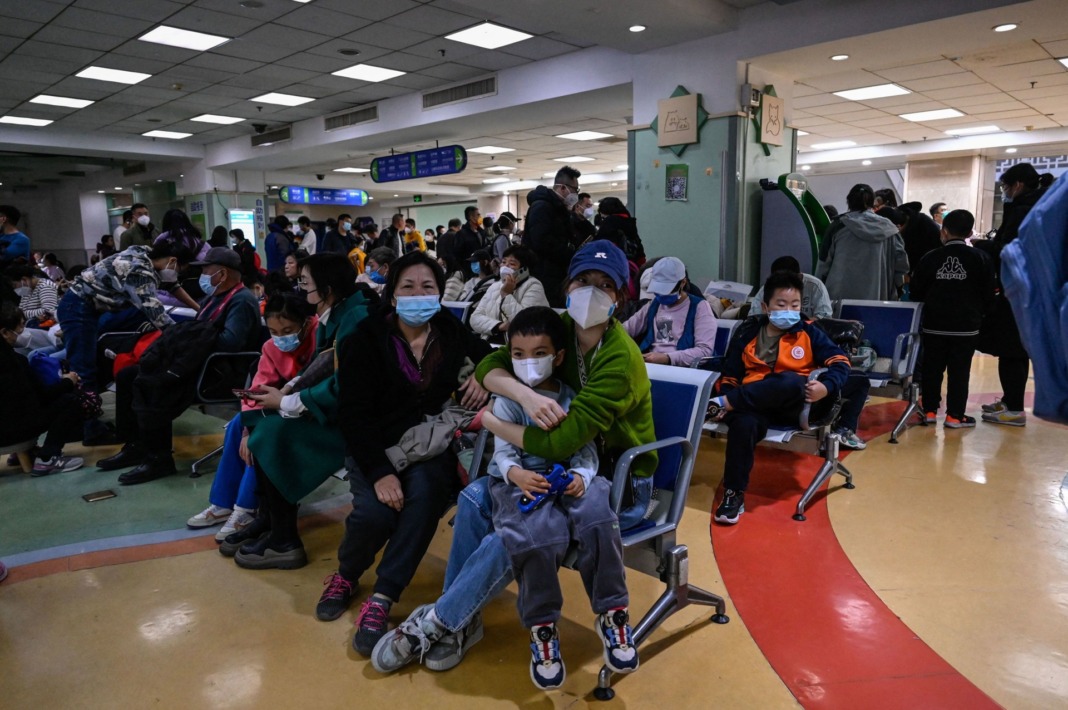In response to a recent surge in pediatric respiratory illnesses and pneumonia in northern China, health authorities in the country assured the World Health Organization (WHO) on Thursday that the increase is linked to typical seasonal germs rather than any novel or unknown pathogen.
Following a request for more information on Wednesday, WHO organized a teleconference with leaders from the Chinese Center for Disease Control and Prevention and the Beijing Children’s Hospital. During this meeting, Chinese officials shared details, emphasizing that the heightened cases involve Mycoplasma pneumoniae pneumonia, a common infection affecting younger children that is typically treatable with antibiotics.
Since October, there has also been a noticeable rise in doctor visits and hospitalizations for respiratory syncytial virus (RSV), adenovirus, and influenza. Although some of these increases occurred a bit earlier than usual, WHO stated that they were “not unexpected” and drew parallels with similar early surges in respiratory illnesses seen in other countries after the lifting of COVID-19 restrictions.
Scientists speculate that the removal of COVID-19 restrictions may have created an “immunity gap,” rendering individuals more susceptible to infections when precautions are relaxed. This phenomenon was observed in the United States last fall, with an early surge in RSV cases among children.
China’s stringent zero-COVID policy, involving strict lockdowns, quarantines, mass testing, and contact-tracing, ended in December. Despite the recent surge in respiratory cases, Chinese officials reassured that hospitals are not overwhelmed with patients.
During the teleconference, Chinese authorities reported enhanced surveillance of respiratory illnesses, contributing to the increase in reported cases. They emphasized that there have been no changes in symptoms to indicate these illnesses differ from the typical viral and bacterial respiratory infections seen every winter.
Since mid-October, WHO has been monitoring data from Chinese surveillance systems, initially noting an increase in respiratory illnesses in northern China. Media reports of a “widespread outbreak of an undiagnosed respiratory illness” prompted the International Society for Infectious Diseases’ Program for Monitoring Emerging Diseases (ProMED) to suggest a potential connection to schools.
Despite the rise in cases, WHO advises people in China to take measures to reduce the spread of infectious diseases, including staying home when sick, wearing masks when appropriate, and practicing good hand hygiene. However, WHO is not recommending any specific changes or precautions for travelers visiting China, other than advising against travel for those who are sick.
In the context of these developments, it is crucial to understand that the increase in reported cases is not unprecedented. Similar trends have been observed in other countries following the relaxation of COVID-19 restrictions. This suggests that the dynamics of respiratory illnesses, influenced by factors such as seasonal variations and changes in public behavior, are playing a significant role.
China’s commitment to transparency and cooperation with international health organizations is evident in their prompt sharing of information with WHO. The enhanced surveillance measures, coupled with the reassurance that hospitals are managing the situation without being overwhelmed, indicate a proactive approach to addressing the surge.
While the recent increase in pediatric respiratory illnesses in northern China has raised concerns, the available information suggests that these cases are primarily attributed to familiar seasonal germs. The proactive response from Chinese health authorities, coupled with ongoing surveillance efforts, provides a foundation for effectively managing and understanding the evolving situation. It is a reminder of the importance of continuous vigilance and international collaboration in the face of health challenges, especially as countries navigate the post-pandemic landscape.



